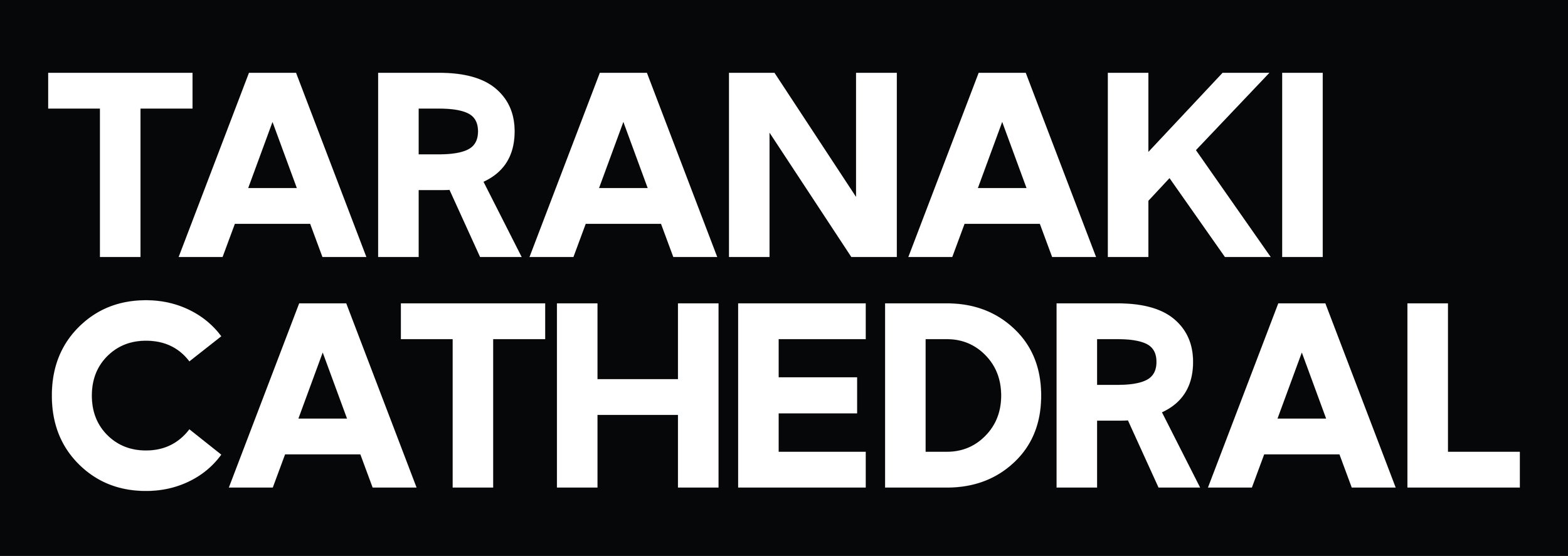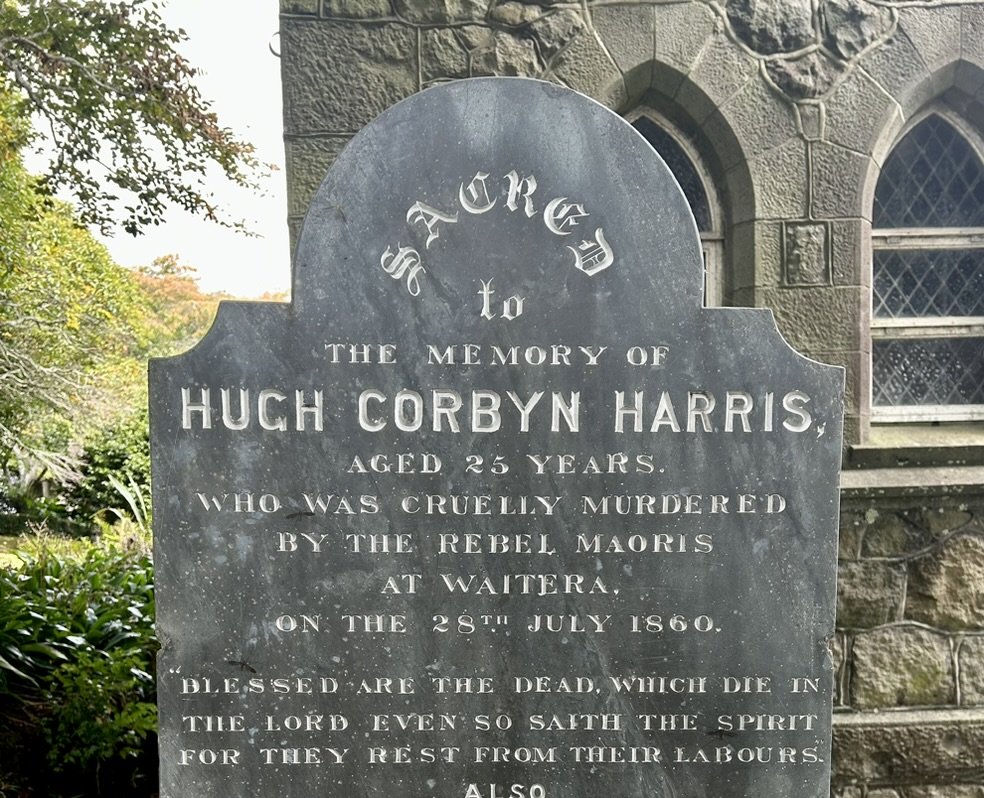Bitterness &
Reconciliation
Te Porokawa me te Noho Tahi
Ko ngā tuhinga porokawa e tohu ana i ngā rua e tāpuke nei ngā hōia o Piritania i mate i ngā Pakanga ki Taranaki (1860-81). Kei ngā kōrero tonu o taua wā ka kitea te ohoreretanga. Heoi anō, i te tau 1956, ka whakataungia e Te Ātiawa ngā parekawakawa ki runga i ngā rua nei, he whakatau i te mamae, e pai ai te noho tahi. Ko tētahi atu mahi mīharo i puta i te tau 2018, ko te kaumatua tuatahi tonu o te Cathedral, a Reverend Tikitūterangi Raumati, i whakaritea kia tāpukehia a ia ki te taha o ngā hōia, nā rātou i pupuhi i tōna iwi kia mate. E noho aiō ana te hunga mate, me noho aiō hoki te hunga ora.
Bitterness & Reconciliation
Bitter inscriptions mark the graves of British soldiers killed in the Taranaki Wars (1860-81). The language of that era still has power to shock. However, in 1956, Te Ātiawa laid pare kawakawa wreaths on these graves, laying down grief in a sign of reconciliation. Another powerful act occurred in 2018 when the Cathedral’s first kaumatua, Reverend Tikitūterangi Raumati, chose to be buried near the men who shot his people. As the dead lay in peace may we live in peace.
A 1927 royal commission of inquiry into the circumstances of the Taranaki wars determined that:
The Natives were treated as rebels and war declared against them before they had engaged in rebellion of any kind, and in the circumstances they had no alternative but to fight in their own self-defence. In their eyes the fight was not against the Queen’s sovereignty, but a struggle for house and home… The government was wrong in declaring war against the Natives for the purpose of establishing the supposed rights of the Crown under that purchase.
It is clear… that Teira was not entitled to sell the Waitara Block without the consent of Wiremu Kingi and his people… Mr Parris, the Land Purchase Commissioner at New Plymouth, had much to do with the purchase from first to last, and it was he who was supposed to have investigated the title to the block. In the circumstances it is difficult to understand how he managed to remain ignorant of the facts in connection with the occupation of the block, which were ascertained without difficulty by the Governor and the Native Minister in April 1863.
Hugh Corbyn Harris
Hugh Corbyn Harris was killed on the beach at Waitara while collecting firewood for the army kitchens 28 July 1860 during the first Taranaki War. He was buried three days later at St Mary’s. The burial is designated as a war grave and the Ministry of Culture & Heritage inspects and cares for it regularly. But the stone John Pickering photographed a few days ago is not the marker of 1860, which is likely to have been a simple wooden cross. The slate marker, expensive and possibly from England, belongs more plausibly to later decades. Corbyn’s New Zealand War Medal was not sent to his father until 1874, and the slate marker could have been erected even later. What we can say is that the inscription for Frances Emma Harris, who died in New Plymouth while staying with her married sister Mary Weyergang, has been added to the marker subsequent to its erection in the churchyard. The point size of the engraving is smaller and the font is different. The marker was in place in 1892 when the family buried Frances with her brother.
Corbyn’s inscription may have been transferred from an earlier marker. The spelling ‘Waitera’ for ‘Waitara’ was uncommon by the 1890s and the phrase ‘cruelly murdered by the rebel Maoris’ uses the language of the war in a way that the immediate family themselves appear not to have indulged in. The loss of their only son had long-lasting consequences for the already financially-strapped Harrises but unlike many of the New Plymouth townsfolk they did not call for retribution for Corbyn’s death, and the blunt words of the engraving on the marker seem out of character. Here is the notice Edwin and Sarah Harris published the day their son was buried:
The afflicted Parents of the late Hugh Corbyn Harris desire to offer their warmest thanks to the Volunteer Rifles, Militia, and other numerous friends, who manifested their respect and esteem for their departed Son, by following his remains to their last resting place. As they are not able to make their acknowledgments in person, they take this opportunity of gratefully assuring them that their voluntary demonstration of kindness and sympathy has afforded much comfort and consolation to his surviving relatives, who mourn the loss of an only and affectionate Son and Brother, but who do NOT “Sorrow as those who have no hope.” New Plymouth, 31st July, 1860. (Taranaki Herald 4 Aug 1860: 2)
Perhaps Christian forbearance faltered when it came to the wording of Corbyn’s epitaph, or perhaps the lost funeral sermon preached by the Reverend Henry Wollaston and sent to England supplied English relatives with harsher words than those used by Edwin and Sarah in their first grief. We simply don’t know.
Credit: https://emilycummingharris.blogs.auckland.ac.nz/2020/04/16/reading-the-stone/
Lead writer: Michele Leggott
Research support: Brianna Vincent, Dasha Zapisetskaya




